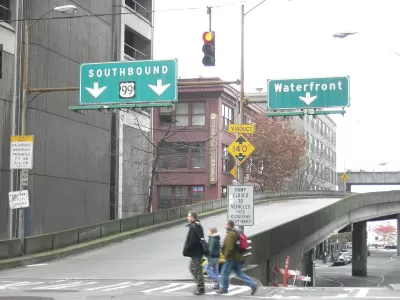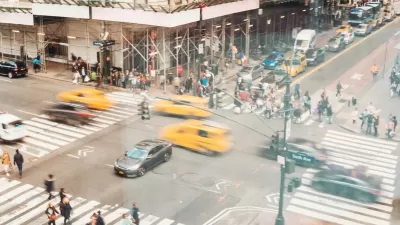Despite a commitment to eliminating traffic deaths by 2030, 2022 is shaping up to be the deadliest year in more than a decade.

Judging by the latest numbers, Seattle’s efforts to reach the Vision Zero goal of eliminating traffic fatalities have not been successful, reports David Kroman in The Seattle Times. “In each of the first five months of the year, the number of deaths and serious injuries exceeded the previous three-year average.” Meanwhile, “At 30 deaths, 2021 was the deadliest year in Seattle since 2006, proving the city to be no exception to the nationwide spike in traffic deaths.” As Kroman notes, “Of the 11 who died so far this year, four were walking, two were biking and five people were either a driver or passenger inside a car. The toll of Seattle’s traffic issues falls disproportionately on bikers and walkers.”
Data shows the burden also falls most heavily on vulnerable groups and low-income communities. “Analysis by city staff shows Black people disproportionately die in traffic crashes and that 27% of 2021’s fatalities were people experiencing homelessness over the previous five years.”
The Seattle Department of Transportation (SDOT) says they are focusing on implementing ‘safe systems design,’ an approach that works to shift blame away from victims and address infrastructural solutions that allow for human error while making it less deadly. “Priorities include making shorter pedestrian crossing, converting more lanes to transit or bike use, broadening corners in intersections to slow vehicle turns and possibly prohibiting turning right on red.”
FULL STORY: Seattle traffic deaths and injuries remain high in 2022

Planetizen Federal Action Tracker
A weekly monitor of how Trump’s orders and actions are impacting planners and planning in America.

San Francisco's School District Spent $105M To Build Affordable Housing for Teachers — And That's Just the Beginning
SFUSD joins a growing list of school districts using their land holdings to address housing affordability challenges faced by their own employees.

The Tiny, Adorable $7,000 Car Turning Japan Onto EVs
The single seat Mibot charges from a regular plug as quickly as an iPad, and is about half the price of an average EV.

Seattle's Plan for Adopting Driverless Cars
Equity, safety, accessibility and affordability are front of mind as the city prepares for robotaxis and other autonomous vehicles.

As Trump Phases Out FEMA, Is It Time to Flee the Floodplains?
With less federal funding available for disaster relief efforts, the need to relocate at-risk communities is more urgent than ever.

With Protected Lanes, 460% More People Commute by Bike
For those needing more ammo, more data proving what we already knew is here.
Urban Design for Planners 1: Software Tools
This six-course series explores essential urban design concepts using open source software and equips planners with the tools they need to participate fully in the urban design process.
Planning for Universal Design
Learn the tools for implementing Universal Design in planning regulations.
Smith Gee Studio
City of Charlotte
City of Camden Redevelopment Agency
City of Astoria
Transportation Research & Education Center (TREC) at Portland State University
US High Speed Rail Association
City of Camden Redevelopment Agency
Municipality of Princeton (NJ)





























